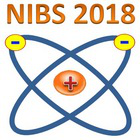Conveners
5th Session
- Dan Faircloth (STFC)
Mr
Tiago Morais Sarmento
(ISIS Neutron Source)
04/09/2018, 11:00
H– and D– sources for fusion, accelerators and other applications
Oral
The standard ISIS Penning-type H– ion source operates with plasma and beam duty cycles of 4% and 1.25%, respectively, at 50 Hz repetition rate. It uses pulsed hydrogen injection, whereas cesium (Cs) is injected continually from an external oven. The oven is usually operated at around 160 °C, which is a compromise between high H– output, long-term plasma stability and low spark rate. Neutral Cs...
Dr
Olli Tarvainen
(STFC Rutherford Appleton Laboratory)
04/09/2018, 11:30
H– and D– sources for fusion, accelerators and other applications
Oral
A Penning-type surface-plasma ion source source has provided H$^{-}$ beam for the ISIS spallation neutron and muon facility at the Rutherford Appleton Laboratory (RAL) for nearly 35 years. The source delivers 55 mA of H$^{-}$ beam current with a beam duty factor of 1.5 $\%$ at 50 Hz repetition rate and a transverse 4-rms emittance $<1.0$ $\pi \cdot $mm$\cdot$mrad. Only 25 mA of H$^-$ current...
Dr
Jacques lettry
(CERN)
04/09/2018, 12:00
H– and D– sources for fusion, accelerators and other applications
Oral
The energetic efficiency of the 2MHz radio-frequency inductively coupled plasma heating (ICP RF) of Linac4’s IS03 H- source is twice more efficient once its standard octupole cusp in offset hallbach configuration is removed. This was shown by Particle in cell Monte-Carlo (PIC-MC) simulation results using the NINJA software [1] and confirmed by plasma characterization via optical emission...

